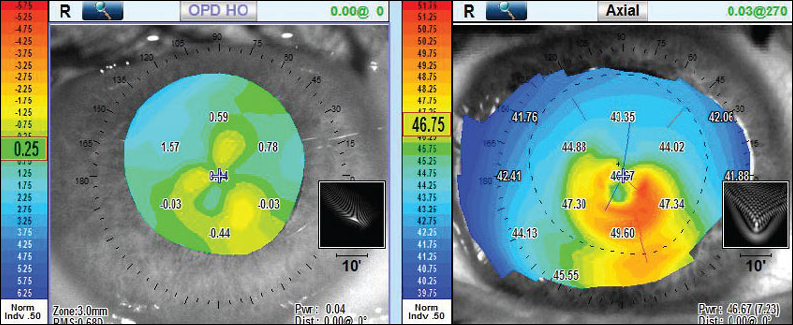 |
Patients who had a low birth weight may be more likely to experience corneal aberrations, study suggests. Photo: S. Barry Eiden, OD. Click image to enlarge. |
Typically associated with premature birth and caused by intrauterine growth restriction, low birth weight is a risk factor for various health complications throughout a person’s life, including some ocular conditions. Research has shown that low birth weight is associated with increased corneal aberrations in childhood, although its influence in adulthood has not been extensively studied. Using data from a study done on adults, a team of researchers decided to evaluate whether low birth weight is associated with corneal aberration later in life.
The prospective, population-based, observational cohort study enrolled 5,628 participants ages 35 to 74. All participants were examined using Scheimpflug imaging. The research team analyzed the relationship between self-reported birth weight and the different types of corneal aberrations that were identified, including astigmatism, coma, trefoil and spherical.
Multivariable analysis showed that lower birth weight was associated with decreased horizontal trefoil, higher spherical aberration, higher root-mean-square, increased higher-order aberration and increased lower-order aberration. No other types of corneal aberrations seemed to have an association with birth weight.
“This population-based study shows that former low birth weight newborns are more likely to have increased spherical aberrations and higher-order aberrations, though the effect is small,” the researchers noted in their paper. “This indicates that low birth weight may have an association with an altered corneal shape development which may affect optical image quality and, hence, visual function.”
Additionally, they pointed out, “Former low birth weight individuals…showed lower reduced visual acuity in adulthood, thus there is the possibility that changes in corneal aberrations may be one of several factors leading to reduced visual acuity in low birth weight individuals.”
The researchers noted that the findings are in accordance with preterm and/or low birth weight individuals in childhood. While the mechanisms leading to a different corneal shape in adults with low birth weight are unclear, they explained, “It is well known that low birth weight and associated factors such as intrauterine growth restriction and prematurity may cause life-long alterations in ocular development.”
Fiess A, Urschitz MS, Nagler M, et al. Association of birth weight with corneal aberrations in adulthood: Results from a population-based study. J Optom. June 25, 2022. [Epub ahead of print]. |


